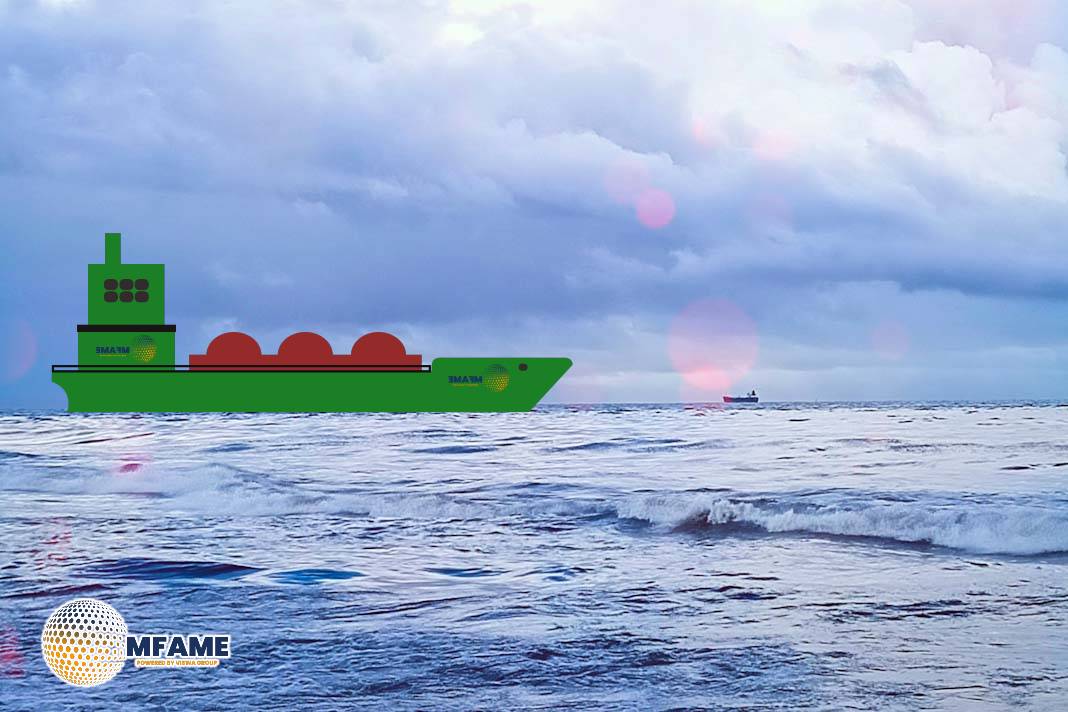- Oil price crash drove tanker stockpiling.
- Demand recovery reduced stored crude.
- Russia’s sanctions disrupted the oil trade.
The floating oil storage sector has experienced significant fluctuations since 2020 due to global economic shifts, geopolitical tensions, and market forces. Key factors influencing storage utilization include the COVID-19 pandemic, international sanctions, oil price volatility, and strategic decisions by Western and Asian markets. The influence of Iran, Saudi Arabia, and OPEC in maintaining supply-demand balances remains crucial, while emerging risks and legal complexities continue to shape the industry, reports Break Wave Advisors.
The COVID-19 (2020-2021) Impact
During the initial stages of the COVID-19 pandemic, floating storage saw an unprecedented rise as lockdowns and travel bans severely cut global oil demand. The supply glut that followed overpowered onshore storage capacity, compelling oil producers and traders to resort to Very Large Crude Carriers (VLCCs) and other tankers for long-term storage. This change pushed tanker charter rates to all-time peaks, reshaping world crude patterns of trade as ships lay up offshore in tactical positions like Singapore, the Gulf of the U.S., and the North Sea, awaiting resumption of demand and favourable market conditions.
April 2020 was a historic occasion for oil markets when West Texas Intermediate (WTI) crude traded briefly at negative prices. The collapse was driven by falling demand, storage deficits, and supply chain bottlenecks. Traders took advantage of a contango market structure—where the price of oil in the future was higher than the current spot price—by holding crude on tankers for resale later at a premium. By the end of 2021 and continuing through 2022, as vaccination efforts paved the way for economic recovery, worldwide demand for oil returned. The reopening of industries and higher energy usage resulted in the constant drawdown of inventories of crude oil, keeping tanker charter rates stable and reinstating conventional supply-demand patterns.
Russia-Ukraine War and Russian Oil Sanctions
The 2022 Russia-Ukraine war remade the international crude oil trade by upsetting traditional supply chains and sea transport logistics. Western sanctions on Russian oil pushed traders to find alternative markets, leading to a significant change in trade patterns. The EU embargo and G7 price caps broke established trade corridors, driving Russian oil to China, India, and Turkey. These countries used discounted prices to obtain consistent crude inflows, with China and India processing the oil domestically and, in certain instances, re-exporting products to Western markets. While Russian oil discovered new markets, floating storage and shadow fleets were instrumental in sustaining these flows.
The displacement of Russian crude resulted in bottlenecks in transit routes and a greater dependence on offshore storage as a result of logistical issues and changing sanctions compliance. The growth of the dark fleet—a fleet of old, unregulated tankers—made it possible for sanctioned oil shipments to persist. Most of these ships conducted business outside the ambit of regulatory control, usually reflagged under registries with lax compliance provisions and skirting Western maritime insurance. A few were also used as floating storage facilities, especially in international waters where enforcement measures were still poor. The geopolitical crisis forever altered crude shipping patterns, raising voyage distances, freight expenses, and market fragmentation. With geopolitical tensions ongoing, the demand for sanctions-compliant maritime logistics and alternative supply routes continues to be a priority.
Iranian and Venezuelan Oil Trade and Shadow Fleet Expansion
Sanctions imposed on Iran and Venezuela have kept floating storage patterns in check as both countries ride around restrictions to maintain oil shipments. Iran, in defiance of U.S. sanctions, has increased crude deliveries mainly to China, using offshore storage facilities and ship-to-ship (STS) transfers to circumvent regulatory hurdles. Growth in “dark fleet” activity, made up of uninsured older tankers, has heightened marine transport risks and led to stronger compliance actions by the International Maritime Organization (IMO).
OPEC+ Moves and Saudi-Iranian Control of Floating Storage
OPEC+ has been a determining force in oil supply trends, and it directly controls floating storage. Saudi Arabia, being the world’s top oil exporter, enforced voluntary cuts in its production between 2023 and 2024 to help stabilize prices. These cuts briefly constricted global supply, causing floating storage volumes to fluctuate.
Iran’s capacity to return to the market—either by evading sanctions or via prospective diplomatic developments—has influenced offshore storage patterns considerably. Statistics for 2023 and 2024 indicate a sharp rise in Iranian crude floating storage, especially in transit centres like Singapore/Malaysia and North China. This increase is simultaneous with higher Iranian exports to China, pushing storage levels at many points during the period.
Red Sea Disruptions and Houthi Attacks (2023-2024)
Geopolitical uncertainty has had a serious effect on floating storage, especially in the Red Sea. Vessel attacks by Houthi rebels broke major shipping lanes, impacting transportation through the Suez Canal. Oil tankers thus had to take detours around Africa’s Cape of Good Hope, resulting in longer transit times and momentary accumulations in floating storage off the Arabian Gulf and Indian Ocean.
Arabian Gulf floating storage data captures these disruptions, with discernible increases in stored crude matching times of increased instability. Storage levels have been highly volatile since the beginning of 2022, with maximum accumulations above 10 million barrels, notably in mid-2022, early 2023, and early 2024. These patterns show that supply chain adaptations and logistical bottlenecks remain to influence storage trends.
China’s Strategic Role in Floating Storage
China has become a leading player in floating storage trends by utilizing its commercial inventories and strategic petroleum reserves (SPR) to handle supply volatility and market opportunities. The nation’s strategy for crude storage is highly intertwined with energy security policies, price arbitrage, and geopolitical positioning in the long term.
Bulk buying during price lows is a major strategy. When the price of crude oil falls, Chinese refiners and state-owned enterprises (SOEs) import more, which frequently exceeds short-term onshore storage capacity. Spare crude is stored temporarily on VLCCs until demand is synchronized with refinery intake or strategic stockpiling timetables. This trend was particularly prominent during the 2020 oil price collapse when China aggressively boosted imports, sending floating storage to record levels.
China’s Reserve Management
China’s management of reserves also impacts floating storage. Regular releases of crude from its SPR keep domestic fuel prices stable and balance supply disruptions, lessening offshore storage requirements. This was seen in 2021 and 2022, as China deliberately dumped crude to keep inflation pressures in check and ensure economic stability.
Moreover, China’s role as a significant purchaser of sanctioned Iranian, Venezuelan, and Russian crude has increased floating storage dependence. Such cargoes tend to be delayed by financial and logistical intricacies, resulting in extended offshore storage off key refining centers such as Shandong and Dalian, or en route off Singapore and Malaysia.
China’s Growing Influence on Global Energy Trade
China’s increasing role in floating storage is a sign of wider changes in global energy commerce. With the nation ongoing to lock in long-term supply deals and balance geopolitical tensions, its storage strategy will continue to be a driving force in crude oil markets, influencing tanker freight rates, supply chain bottlenecks, and price volatility.
Floating Storage Trends in 2025
As of 2025, the world floating storage market is demonstrating significant changes from 2024. Although total storage volumes have reduced since mid-2024, regional allocation and vessel usage trends reflect strategic realignments in reaction to supply chain pressures, geopolitical factors, and changing demand.
Singapore/Malaysia and North China remain the leaders in floating storage, with 19.6% and 14.2% of worldwide volumes, respectively. The Arabian Gulf has witnessed a decline, implying a move towards more economical crude movement and more dependence on on-shore storage. VLCCs continue to be the favourite for floating storage, with 55% of the market held due to their economical nature. The breakdown of stored crude is steady, with Iranian and Venezuelan crude continuing to hold major positions due to continued trade prohibitions.
Legal Risks in Floating Storage
Floating storage operations pose substantial legal risks, especially in charter party contracts. Time charters can state whether ships are allowed to be employed for storage, while voyage charters generally disallow extended stationary employment, generating potential conflicts.
Safety and maintenance hazards, such as hull fouling, piracy, and weather conditions, present additional complexities. Cargo degradation through extended storage may lead to quality disputes, necessitating preventative controls to protect oil integrity. Insurance coverage also needs to be evaluated, as floating storage changes a ship’s risk profile, in many cases, requiring additional provisions.
Did you subscribe to our daily Newsletter?
It’s Free Click here to Subscribe!
Source: Break Wave Advisors


















